
Liberia is a country in West Africa founded by free people of color from the United States. The emigration of African Americans, both freeborn and recently emancipated, was funded and organized by the American Colonization Society (ACS). The mortality rate of these settlers was the highest among settlements reported with modern recordkeeping. Of the 4,571 emigrants who arrived in Liberia between 1820 and 1843, only 1,819 survived (39.8%).

The Armed Forces of Liberia (AFL) are the armed forces of the Republic of Liberia. Tracing its origins to a militia that was formed by the first black colonists in what is now Liberia, it was founded as the Liberian Frontier Force in 1908, and retitled in 1956. For almost all of its history, the AFL has received considerable materiel and training assistance from the United States. For most of the 1941–89 period, training was largely provided by U.S. advisers, though this assistance has not prevented the same generally low levels of effectiveness common to most of the armed forces in the developing world.

Operation Torch was an Allied invasion of French North Africa during the Second World War. Torch was a compromise operation that met the British objective of securing victory in North Africa while allowing American armed forces the opportunity to begin their fight against Nazi Germany and Fascist Italy on a limited scale. It was the first mass involvement of US troops in the European–North African Theatre and saw the first large-scale airborne assault carried out by the United States.

Benjamin Oliver Davis Sr. was a career officer in the United States Army. One of the few black officers in an era when American society was largely segregated, in 1940 he was promoted to brigadier general, the army's first African American general officer.

The 92nd Infantry Division was an African American, later mixed, infantry division of the United States Army that served in World War I, World War II, and the Korean War. The military was racially segregated during the World Wars. The division was organized in October 1917, after the U.S. entry into World War I, at Camp Funston, Kansas, with African American soldiers from all states. In 1918, before leaving for France, the American buffalo was selected as the divisional insignia due to the "Buffalo Soldiers" nickname, given to African American cavalrymen in the 19th century. The divisional nickname, "Buffalo Soldiers Division", was inherited from the 366th Infantry, one of the first units organized in the division.

Edwin James Barclay was a Liberian politician, poet, and musician who served as the 18th president of Liberia from 1930 until 1944. He was a member of the True Whig political party, which dominated the political governance of the country for decades. Under Barclay's leadership, Liberia was an ally of the United States during World War II.
The Mediterranean Theater of Operations, United States Army (MTOUSA), originally called the North African Theater of Operations, United States Army (NATOUSA), was a military formation of the United States Army that supervised all U.S. Army forces which fought in North Africa and Italy during World War II.
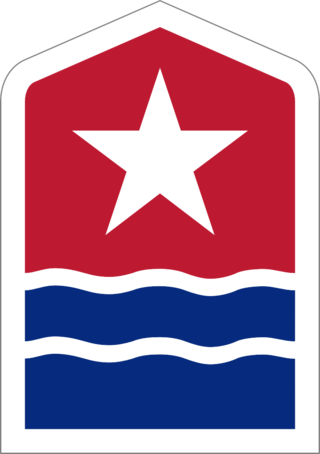
United States Army Forces in the Middle East(USAFIME) was a unified United States Army command during World War II established in August, 1942 by order of General George C. Marshall, the Chief of Staff of the United States Army, to oversee the Egypt-Libya campaign.
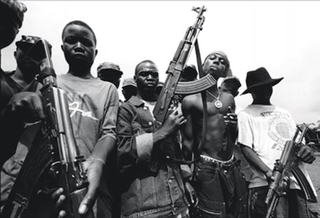
The Second Liberian Civil War was a civil war in the West African nation of Liberia that lasted from 1999 to 2003.

The United Nations Mission in Liberia (UNMIL) was a United Nations peacekeeping operation established in September 2003 to monitor a ceasefire agreement in Liberia following the resignation of President Charles Taylor and the conclusion of the Second Liberian Civil War (1999–2003). At its peak it consisted of up to 15,000 UN military personnel and 1,115 police officers, along with civilian political advisors and aid workers.

The 22nd Marine Expeditionary Unit is one of seven such units currently in existence in the United States Marine Corps. It is a Marine Air Ground Task Force with a strength of about 2,200 personnel. They are currently based out of Marine Corps Base Camp Lejeune, North Carolina and fall under the command of the II Marine Expeditionary Force. It is the most decorated of the U.S. Marine Corps' seven MEUs.
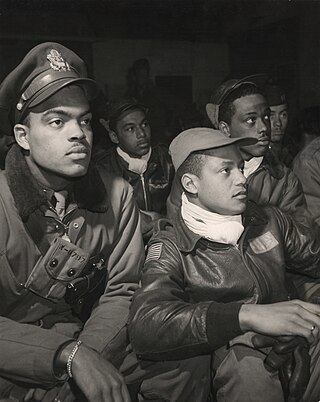
The military history of African Americans spans African-American history, the history of the United States and the military history of the United States from the arrival of the first enslaved Africans during the colonial history of the United States to the present day. African Americans have participated in every war which has been fought either by or within the United States, including the Revolutionary War, the War of 1812, the Mexican–American War, the Civil War, the Spanish–American War, World War I, World War II, the Korean War, the Vietnam War, the Gulf War, the War in Afghanistan, and the Iraq War.

The Nigerian Army (NA) is the land force of the Nigerian Armed Forces. Tracing its history to British colonial forces in West Africa, it is the largest component of the armed forces. The President of Nigeria is the Commander-in-Chief of the Nigerian Army, and its professional head is the Chief of Army Staff, who is the highest ranking military officer of the Nigerian Army. It is governed by the Nigerian Army Council (NAC). The Nigerian Army is operationally and geographically divided into ten divisions, the basic field formation. The army has been involved in operations throughout the country, most especially during the Nigerian Civil War, and has undertaken major operations abroad. Nigerian Army officers have served as chiefs of defence in other countries, with Brigadier General Maxwell Khobe serving as Sierra Leone chief of staff in 1998–1999, and Nigerian officers acting as Command Officer-in-Charge of the Armed Forces of Liberia from at least 2007.

Joint Task Force Liberia was a joint task force formed from August to October 2003 in response to the crisis that developed during the Second Liberian Civil War. The ongoing civil war destabilized the area and created a large number of refugees as rebel forces closed in on Monrovia and took over Bushrod Island. As a result, the Freeport of Monrovia closed, causing food shortages.

U.S. Army Southern European Task Force, Africa(SETAF-AF), is the United States Army service component command of United States Africa Command, and is headquartered at Caserma Ederle and Caserma Del Din, Vicenza, Italy.
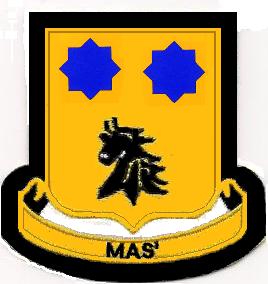
The 28th Cavalry Regiment (Horse) (Colored) was a short-lived African American unit of the United States Army. The 28th Cavalry was the last horse-mounted cavalry regiment formed by the U.S. Army. The regiment was formed as part of the 2nd Cavalry Division in 1943 and inactivated in North Africa in 1944 without seeing combat.
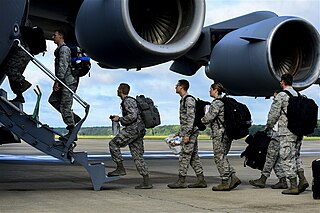
Operation United Assistance was a 2014 United States military mission to help combat the Ebola virus epidemic in West Africa, including the part of the epidemic occurring in Liberia. The 101st Airborne Division headquarters was responsible for leading the mission.

An Armored group was a command and control headquarters in the United States Army equivalent to the headquarters of an armored division combat command during World War II. Most armored groups served in the European Theater of Operations (ETO). Typically an armored group was attached to each American corps in the European Theater of Operations.
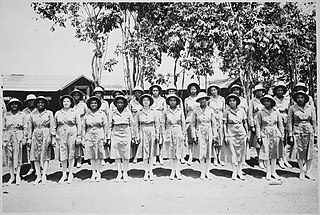
The 25th Station Hospital was an all African American unit of nurses who served in the Army Nurse Corps during World War II. The unit was the first African American group sent overseas and were stationed for a short tour in Liberia in 1943.

The 23rd Infantry Brigade is a Liberian military unit that serves as the ground force component of the Armed Forces of Liberia. Commanded by a colonel, it consists of two infantry battalions under the 23rd Infantry Brigade and supporting units.



















